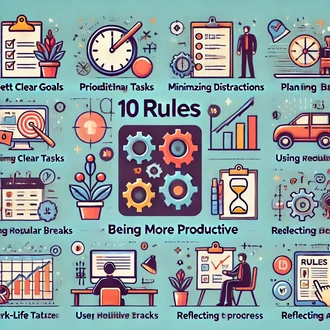Transcription Writing an email productively
Before you start writing your email, it is essential to be clear about the purpose of your email. What is the message you want to convey? What action do you expect the recipient to take? Having a clear understanding of the purpose will help you focus the content of the email and avoid unnecessary rambling.
In this session, we will be looking at how to write emails productively so that you can improve communication efficiency and achieve effective results in your work environment.
Short, concise and descriptive language
The subject line is the recipient's first impression of the message's content. Use a descriptive and clear subject line that reflects the main topic of the email. Avoid vague or generic subjects that may go unnoticed in the inbox.
Brevity is key to writing productive e-mails. Avoid overextending and use clear and direct sentences to convey your message. If you have several topics to address, consider sending separate emails for each, rather than trying to include everything in one message. While it is important to use professional language in work emails, avoid excessive use of jargon and technical jargon that can make the message difficult to understand. Be clear and concise when expressing your ideas, using simple language that is easy for the recipient to understand.
Always maintain a courteous and respectful attitude in your e-mails. Use an initial greeting and a cordial farewell, and be sure to express your requests or comments in a polite manner. Politeness is essential for effective and professional communication.
Organization and presentation of information
Organize information into paragraphs and bullets to make the e-mail easier to read. Divide the content into clearly identifiable sections and use headings to highlight the most important points. This will allow the recipient to find the relevant information quickly and efficiently.
If you need to provide additional information, use links or attachments instead of including long paragraphs in the body of the e-mail. Links can direct the recipient to specific web pages or documents where they will find the information they need. This will help keep the email concise and avoid cluttering the inbox with lengthy messages.
If there are actions you expect the recipient to take, hi
write email




